| Difficulty | Cost | Time |
| Moderate | $150 to $250 | A few hours to a day |
There is nothing precarious about climbing stairs outdoors. However, when there is no stair railing, it suddenly becomes unsettling and potentially dangerous to climb stairs. It is more challenging for young ones, seniors, and those with impaired movements.
While you might not need stair railings if you have only a couple of steps, they become absolutely necessary when there are more than two steps. Also, if the total elevation of the stairs exceeds 30 inches, you must install a stair railing for safety and support.
So, if you do not have a railing on your outdoor stairs and you or your guests have been feeling a tinge of discomfort when climbing them, it is high time that you install a railing on concrete steps outdoors. This will not only provide the necessary support to users and prevent unforeseen accidents but will also add to the aesthetics of your space.
If you have been thinking of putting a railing on concrete steps outdoors but do not know how to install a stair railing outdoors, read along. In this comprehensive guide, we will cover all about it—from the required tools and supplies to a step-by-step guide, safety measures, and answers to common queries.
So, let’s get started!
Table of contents
Do I Need a Handrail on Outside of Stairs?
Whether you need to attach handrails to concrete steps outdoors or not depends on your local building codes and a few factors. Below, we have briefly discussed these factors one by one.
Step count and depth: Staircases with more than four steps generally need handrails for stability and safety features. That said, some railing codes specify that a handrail is required when there are more than two steps. Sometimes, the overall height of the staircase is also considered for determining whether a handrail is required or not. In that case, the total elevation of more than 30 inches above ground requires the installation of a stair railing.
Users of the stairs: If you have children under twelve, seniors, and individuals with mobility limitations frequenting your staircase, you must attach a handrail to concrete steps.
Local building codes: Always consult local regulations concerning handrail requirements on outdoor stairs before deciding not to install one on your property.
Keep safety as your top priority when deciding whether to add railing to concrete steps outdoors or not. When in doubt, consider investing in a reliable handrail for outdoor steps for added peace of mind and ensuring everyone can use it safely and comfortably.
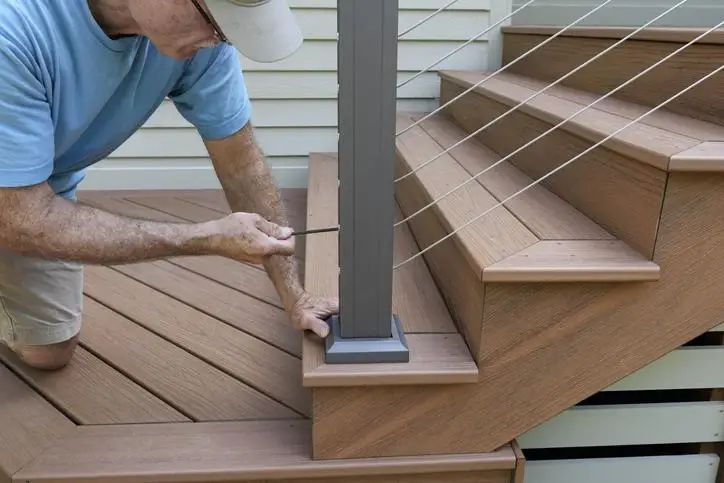
Tools and Materials for a Secure Climb
Now that you have decided on putting a railing on concrete steps outdoors, it is time to gather all the required tools and supplies for outdoor handrails for concrete steps installation.
Let’s gather all the necessary tools and materials required for this project.
Essential Tools
The tools that you will need may vary depending on the kind of railing (wood or metal, etc.) and structure of your staircase. That said, here is a list of general tools that you might need to install railing on concrete steps:
- Tape measure – To take exact measurements of stairs and railing components.
- Level – To check that your railings are perfectly centered and stable before installing them.
- Pencil – For marking drill points or other important measurements with ease.
- Drill and drill bits – For attaching handrails to concrete steps. When dealing with hard concrete surfaces, you might need a hammer drill as well.
- Screwdrivers – For putting together railing components and fastening them securely onto stairs.
- Hammer – For driving in nails and adjusting brackets.
- Saw – For cutting wood or metal railing components when making adjustments.
- Wrench or socket set – For tightening bolts and nuts in railing systems, if any.
- Safety Gear – For safeguarding yourself during drilling and sawing activities.
Materials
Depending on your chosen material for the stair railing, the required material may also vary. However, below is a list of general material that you will be needing:
- Handrail: When picking a handrail for outdoor stairs, make sure that you pick one that is not only sturdy and stable but also suits your outdoor aesthetics and is within your budget. If you have got 4 to 5 steps and are looking for sleek metallic railing, check out VEVOR Handrails for Outdoor Steps. It comes in two colors—black and white—and is made from durable wrought iron material with thick solid bases, which is more rigid and reliable than aluminum products.

- Posts or brackets – They provide support and secure your handrail to stairs or walls. Select an appropriate number and type based on your chosen railing system.
- Balusters: These are vertical bars that fill the space between posts. Choose the number of balusters for ideal spacing.
- Hardware: Hardware required for installing handrails on concrete steps may include screws, bolts, nails, anchors, etc.
- Leveling shims – These small wedges help adjust the alignment of your railing as needed.
- Caulk or sealant – For weatherproofing the connections between different railing components and your stairs or wall.
Gathering all the materials for installing a railing on your outdoor stairs could become hectic and annoying when you fall short on something or forget to get some particular item. Therefore, to avoid any inconvenience, we advise that you get yourself a railing that will come along with all the necessary items required to install it.
How to Install Stair Railing Outdoor?
Now that you have gathered all the necessary tools and materials, installing railing on concrete steps is time.
Step 1: Measuring and Marking
Begin by measuring the length of your to determine the length of the required handrail. Next, mark post locations. To ensure optimal support and aesthetics, consider following the standard code about spacing. Ensure that the distance between posts is not more than 4 feet.
Step 2: Installing Posts
After carefully marking the post locations, start drilling pilot holes to install posts. Use appropriate materials to secure the posts in place. If dealing with wood, use screws, and for concrete, use sturdy anchors. Make sure that you get strong anchors, as the strength of your railing will depend on these concrete anchors. Before securely tightening the screws and bolts of posts, double-check for perfect vertical alignment using a level.
Step 3: Attaching Handrail to Concrete Steps
After installing posts, double-check if they are correctly and symmetrically positioned. Next, you can go ahead and attach handrail brackets to the posts and then attach the handrail to the brackets. Make sure that you use appropriate screws and bolts.
Once you have attached the brackets and handrails to the posts, go ahead and give the handrail a firm shake to check if there is anything wobbly. You can move on to the next step if nothing seems wobbly and shaky. Otherwise, you will need to look for the reason underlying the wobbliness and address it. If need be, consider taking professional help. Also, consult the manual that came with your railing system.
Step 4: Attaching Balusters
Follow the specific instructions for your railing system to attach balusters to your stair railing. Make sure that you space them evenly and secure them tightly. For optimum spacing, refer to your local railing codes.
Step 5: Finishing Touches
Once you have double-checked that everything is in its place and nothing is wobbly, you can go ahead and close all the gaps and connections. Make sure you apply caulk around the base of the posts and other connection points between different railing components. This will help weatherproof your railing and prevent water infiltration.
After caulking, cleaning up the space, and packing up the leftover tools, you are done. You have successfully installed railing on concrete steps outdoors.
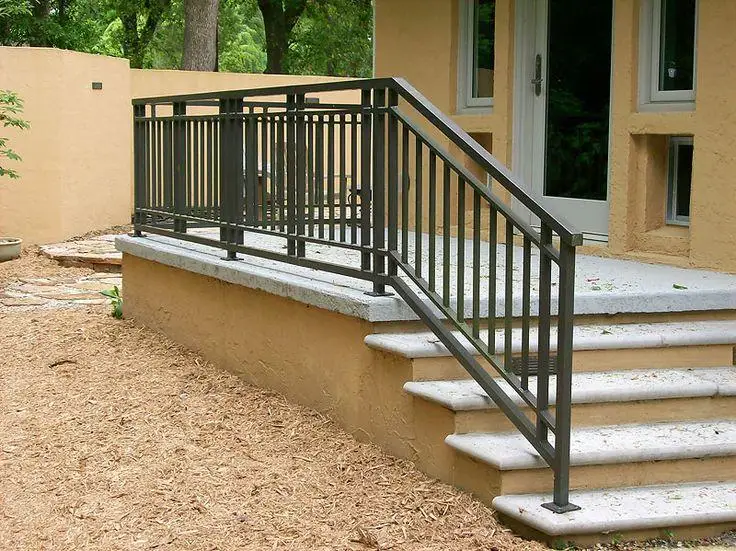
Safety Precaution When Installing Railing on Concrete Steps
Installing handrails on concrete steps outdoors definitely adds extra safety to your staircase, but you will have to take some safety measures when putting a railing on concrete steps as well.
- When drilling or hammering, always wear safety glasses to prevent debris from flying into your eyes.
- When using loud power tools like hammer drills, consider wearing earplugs or muffs for hearing protection.
- To protect your hands from mishaps, consider wearing sturdy gloves throughout the process of installing railing on concrete steps.
- If need be, consider wearing a dusk mask when drilling holes to limit inhaling dust particles into your lungs.
- Make sure that you are using proper drill bits. When drilling in concrete, consider using a hammer drill for efficiency.
- Keep in mind that the stability of the railing is dependent on the concrete anchors. So, make sure that they are sturdy and properly installed.
- If uncertainty strikes you at any step of the installation, do not hesitate to consult a professional. You can also ask your DIY enthusiast friend for advice and assistance.
FAQs about Outdoor Handrails Installation
Q: How high should a handrail be on the outside steps?
Building codes typically mandate that handrails on outdoor stairs be installed between 34 and 38 inches above the tread surface (where your foot lands).
Q: Where should the handrail start and stop?
Where handrails are not continuous between runs, the handrail must extend a minimum of 12 inches beyond the first and the last step.
Q: What are the common mistakes to avoid during installation?
Some common mistakes to avoid when putting a railing on concrete steps include misaligned posts, uneven baluster spacing, improper anchoring, and neglecting local railing codes.
Conclusion
Climbing stairs that lack a railing could be unsettling for many. Besides slight discomfort, missing stair railing could also lead to accidents. Besides that, not following local railing codes could lead you into legal trouble. So, use this guide to install railing on your outdoor stairs to not only comply with local railing codes but also to make your stairs safe for children, seniors, and individuals with impairments.
To ensure that your outdoor stairs railing is durable and aesthetically pleasing, consider getting it from a reputable brand, such as VEVOR. Check out VEVOR’s stair handrail collection.
Happy railings!

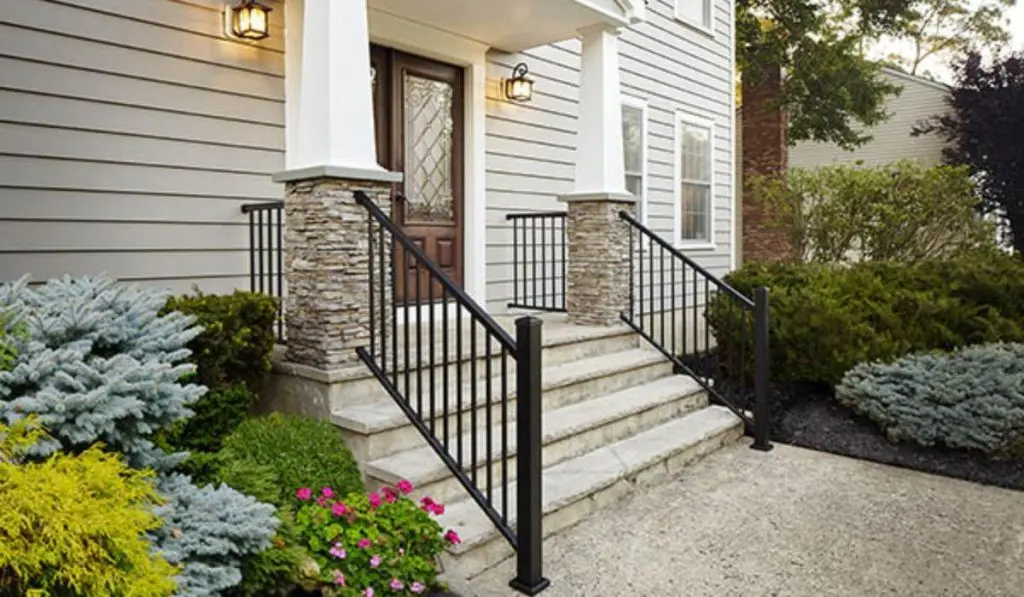
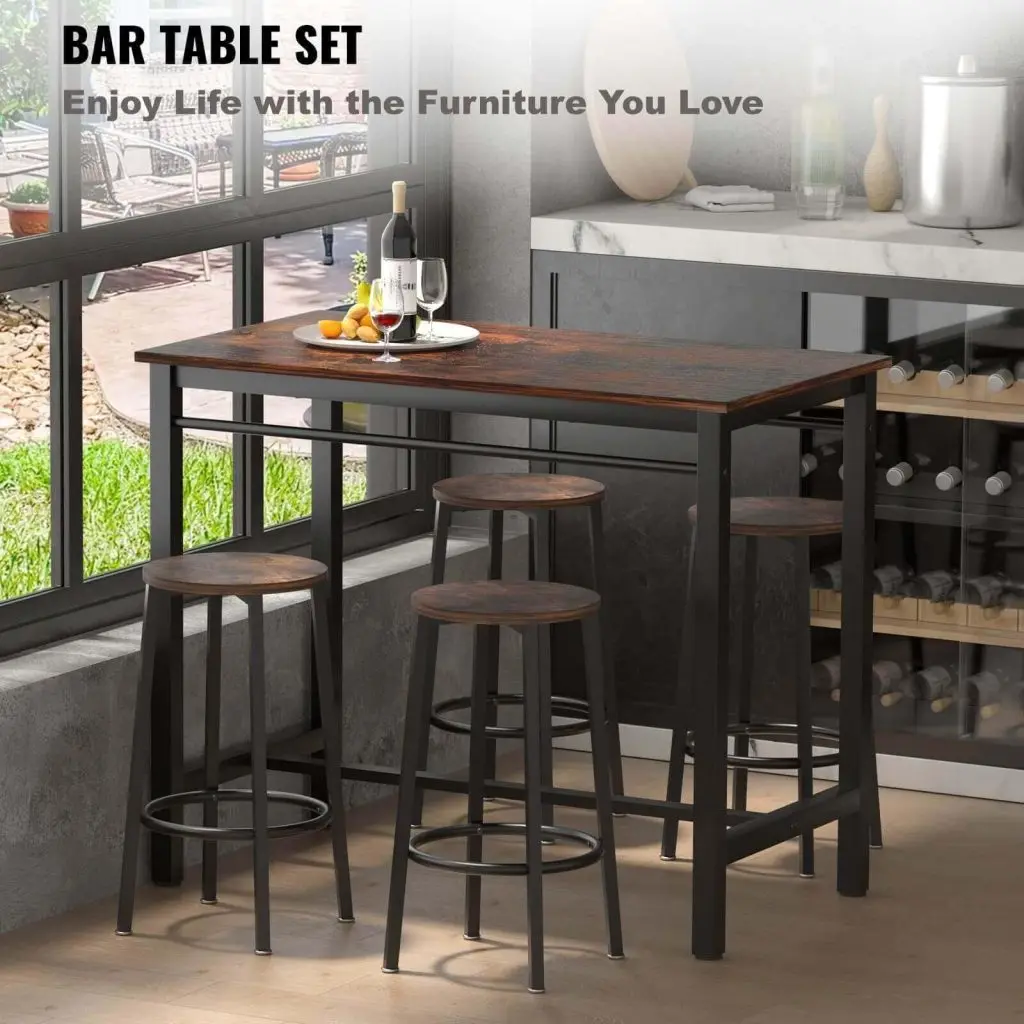

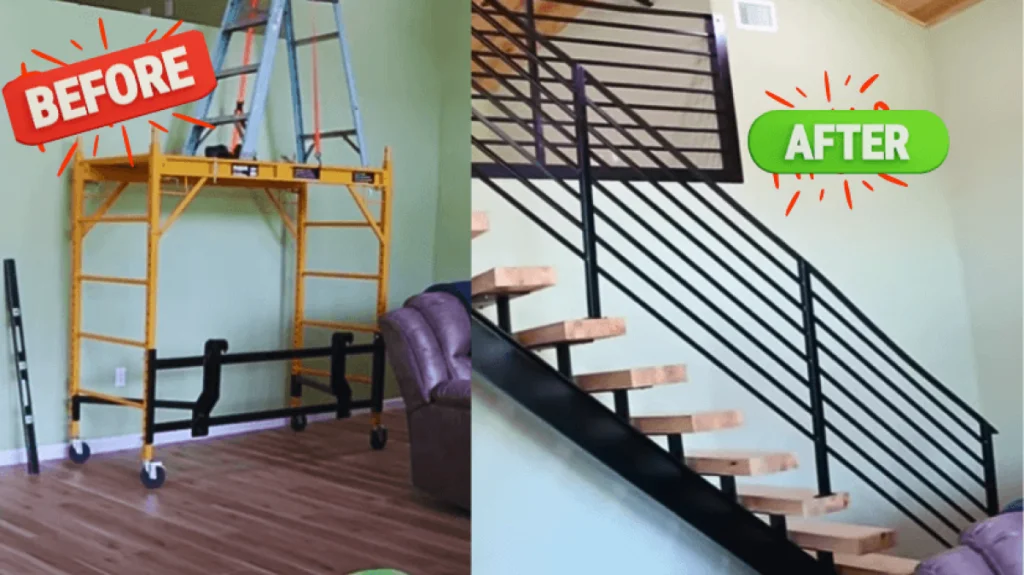

Ich habe mir Geländer für den Außenbereich gekauft und möchte es jetzt anbringen. Es ist gut zu wissen, dass ich mit der Vermessung des Handverlaufs beginnen muss und dann mit der Markierung der Postorte weitermache. So werde ich das machen, danke für die Anleitung!